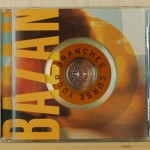Every week in The Kiddy Pool, Erin Newcomb confronts one of many issues that parents must deal with related to popular culture.
Last week, NPR’s Adam Frank published a piece called “Noticing: How to Take a Walk in the Woods.” Frank advises us to tap into our inner scientists by slowing down and taking more time to observe, reflect, and ask questions about the world around us. About a year ago, I discussed a related issue when I reviewed Richard Louv’s Last Child in the Woods. I want to pull the two pieces together here and offer some reasons why it is spiritually beneficial to walk in the woods with children.
- Be still.
Frank asks his audience to slow down, to step back from the busyness of everyday life and use the forest to look around and engage our surroundings. Walking with children slows the pace even more, and it requires adults to set aside any agendas about destinations or mileage or maps and simply be. My elder daughter likes to pour water into holes and watch the dirt absorb the moisture. My younger daughter picks up handfuls of rocks and watches them cascade out of her hands. These activities are full of wonder, but they would not merit most of our “to do” lists—and that’s a good thing.
- Know your place.
Contemplating any grand natural phenomenon—a forest or a river or a sunset or a mountain—illustrates our place in the grand cosmic scheme. All our art derives from the original masterpieces of our Creator. We too are masterpieces of our Creator. Immersing ourselves in what is not manmade reminds us that we are weaker than the ocean, smaller than the sky. But we can sift the dirt and collect acorns and tend plants. We can listen for creatures and water and wind. Walking with children—without an agenda beyond joy—helps us to understand our relationship and responsibility to the rest of creation. My three-year-old cannot swim or dam the Hudson River, but she can ripple its surface with rocks and race away from its crashing waves.
- Appreciate aesthetics.
I like to believe that beauty is enough, that beauty is worthwhile for its own sake, and that we need more natural beauty in this world. While Frank sees a walk in the woods as an opportunity to raise questions about the world around us, I see it (also) as a reflection of that perfect garden we relinquished long ago. We can consider the lilies, along with all the flora, fauna, wildlife, and landscape elements. We can value the earthworm for what it does to cultivate the soil, but also for its symmetry, its form perfectly suited to its function, its rich brown hue. Walking in the woods can remind us that life is good and beautiful and that we who live it are fearfully and wonderfully made in the image of a good and beautiful God. And some days, most days, that’s enough. Creation is a gift, like the bouquets of dandelions my elder daughter makes for me. Sunshine yellow: even the weeds possess symmetry and beauty.
Frank sees scientific observation as a way of feeling alive, with “the smallest detail as an opening to a wider world of wonder and awe.” That world can be both scientific in the sense that Frank uses the term and spiritual in the way that our observations can lead us to proclaim “all of creation testifies to the glory of God.” We too can testify, and we can teach our children to testify likewise, by making time to pay attention to creation. We need to walk in the woods, without a watch or a schedule, with only the sun as our timekeeper, so that we can see ourselves as part of a good creation teeming with life. We need to walk in the woods with our children to share in the joy, the peace of gazing upon creation and witnessing the hand of God.











